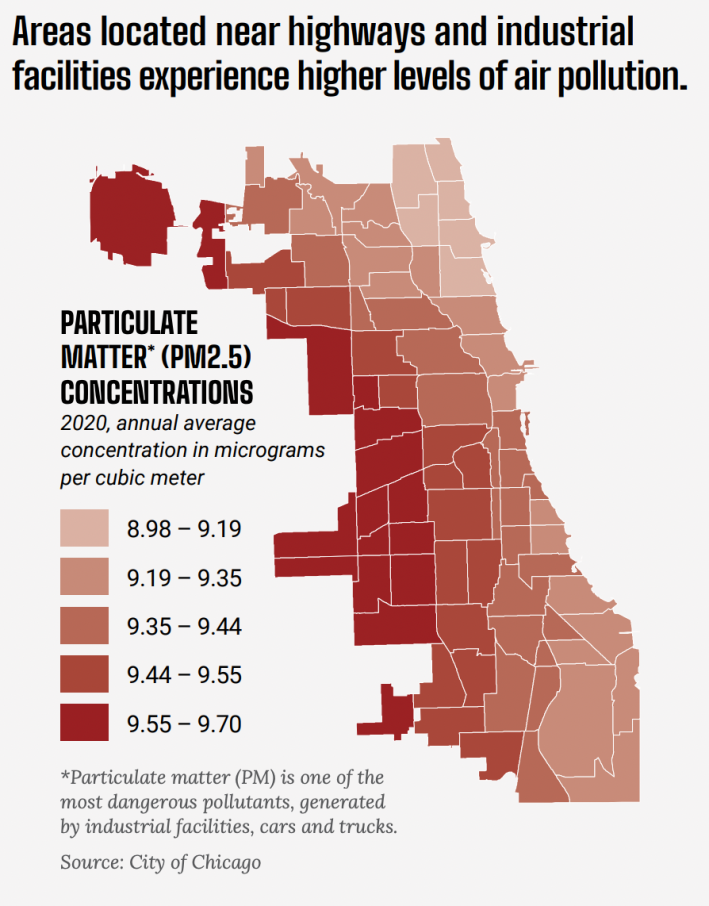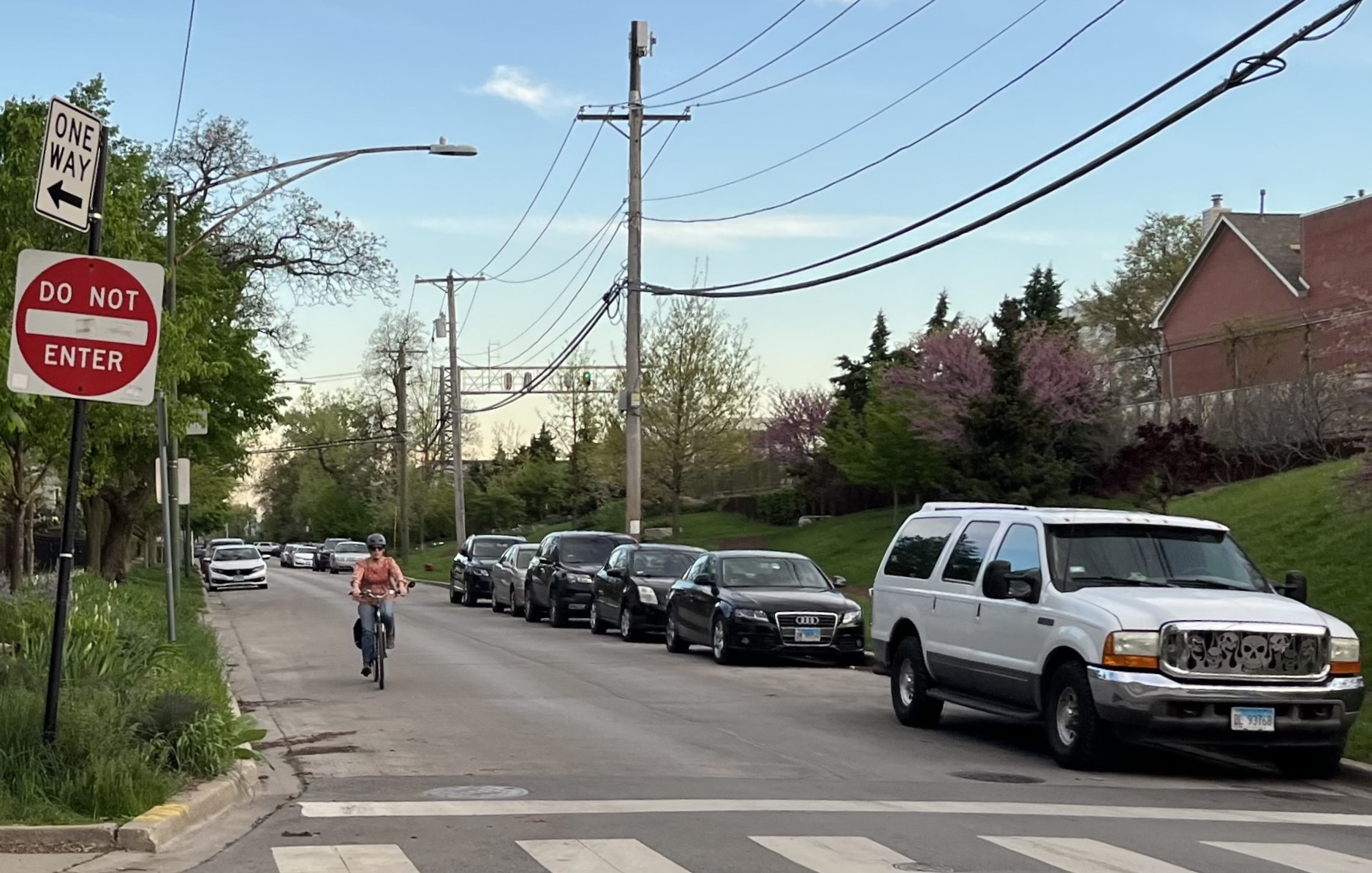City seeks feedback on draft ten-year “We Will Chicago” plan including transportation goals
7:49 PM CDT on August 1, 2022
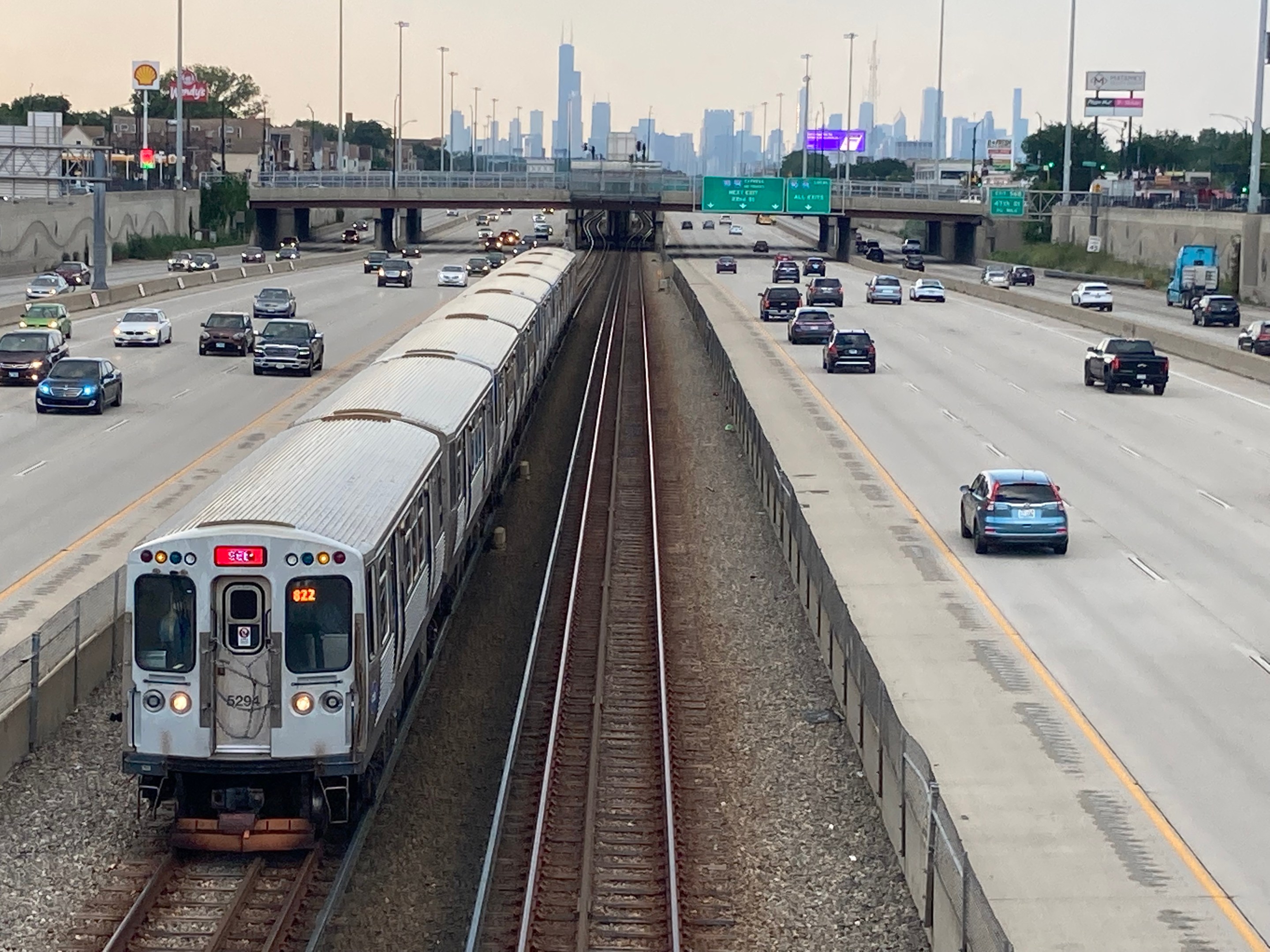
The Red Line, Dan Ryan, and Skyline in Englewood. Photo: John Greenfield
On July 14, the Mayor Lori Lightfoot administration issued a draft of an ambitious citywide plan for community feedback. Entitled We Will Chicago, the ten-year plan is the first of its kind in size and scope since a 1966 plan issued under the Richard J. Daley administration. The 148-page “We Will” document is divided into eight pillar areas of focus: Arts and Culture; Civic and Community Engagement; Economic Development; Environment; Climate and Energy; Housing and Neighborhoods; Lifelong Learning; Public Health and Safety; and Transportation and Infrastructure.
The plan introduction acknowledges both deliberate and unintentional harms from past city plans that heightened inequity between wealthy, predominantly white neighborhoods and lower income communities of color, and specifically names federal highway construction, redlining, so-called urban renewal, blockbusting, and Lightfoot predecessor Rahm Emmanuel’s closing of 49 public schools in 2013 as damaging policies (among many others) the new plan strives to redress.
The goals outlined by the plan are appropriately ambitious. The draft was created with input from community meetings and pillar research teams of artists, organizers and volunteers who put the city’s most glaring problems front and center in each pillar area.
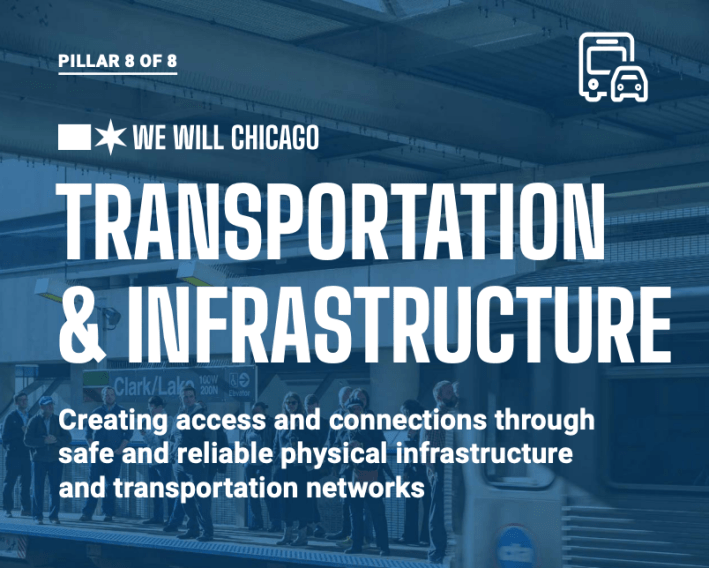
The Transportation and Infrastructure pillar comprises the last fourteen pages of the document (the website makes it easy to jump to any pillar of interest) and names five overarching goals with numerous sub-objectives and a smattering of supportive data under each goal. Happily, the goals of this pillar are focused on improving access to transportation for all, environmentally responsible development, and getting folks out of cars and onto public transit. Here are a few highlights.
Goal one, in a reflection of a planning process that centered equity and resiliency, is to “ensure the city’s transportation networks and infrastructure system are safe, equitable and accessible for all.” Objectives under this goal include equitably distributing transportation and prioritizing the safety of all users, regardless of age, income, and ability.
It’s great to see that this is a top priority for Chicago’s transportation system, which currently serves the North Side far better than the South and West sides, as well as addressing the awful spike in traffic violence worsened by the pandemic.
However, I found it odd that on the supporting data page the headline of a traffic fatalities chart stated, "The majority of Chicago traffic crash deaths involve vehicle occupants or drivers." Traffic deaths are always tragic, but during the COVID-19 pandemic the number of people killed outside motor vehicles (i.e. on foot, bike, etc.) has increased at a higher rate than the number of motorist deaths.

The second goal under the Transportation and Infrastructure pillar is to “create transportation networks that support greater connectivity by active and sustainable options…methods that don’t require car ownership.” This includes expanding transit in communities with the greatest need, better connecting neighborhoods outside of downtown via public transportation, and prioritizing investments in infrastructure that facilitate walking, biking, and transit.
Fortunately, Chicago has lots of relatively low-hanging fruit to harvest in this department. In the grand scheme of things, building a connected, protected bicycle network and installing dedicated bus lanes with transit signal priority wouldn't be especially difficult or expensive.
We Will's supporting data shows the extreme discrepancy in walkability between North and South side neighborhoods. It also crows a bit about the addition of bike lanes over the last 10 years, though it should be noted the very modest growth of “low stress bikeways” (protected lanes on main streets and traffic-calmed routes on side streets) versus “other bikeways,” most of which are marked with paint, which provides no real protection or separation between bikes and cars.
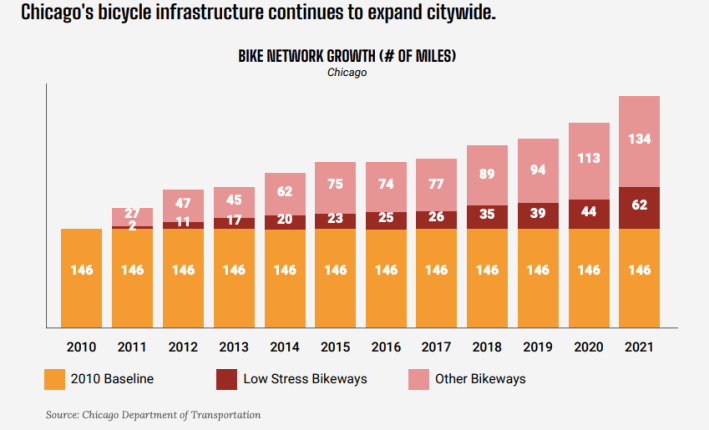
The third goal is to reduce the negative impacts of road, rail, and waterway freight traffic – pollution, noise, dangerous traffic conditions – where it is most severe, in primarily Black and Latinx neighborhoods on the South and Southwest sides. Chicagoans who live close to to industrial corridors along the river and near the city limits live with much higher levels of air pollution and suffer worse health outcomes than residents who don't. This goal also has objectives to make roads safer for pedestrians, bike riders, and transit users, and mitigate health and environmental damage caused by heavy truck traffic, all while maintaining the city’s status as a transportation and shipping hub.
The fourth goal prioritizes investment in communities most harmed by past transportation and infrastructure decisions. This includes “reconnect[ing] communities that have been divided by transportation infrastructure.” Other cities have begun dismantling highways that decimated Black and Brown communities in the middle of the last century. It’s refreshing to see leaders in traffic-clogged Chicago show an interest in highway removal (instead of expansion) in a near-future plan. This goal also calls for supporting network-scale transportation projects advocated for by community members.
The final goal of the transportation pillar is promoting environmental sustainability in transportation projects, including reducing pollution and emissions from transportation – the majority of which is generated by car and truck drivers – and investing in climate resilience projects like water conservation strategies and stormwater management.
An accompanying policy ideas document provides an additional 77 pages of more than 600 proposals to meet the dozens of goals and objectives outlined in the We Will plan. Policy ideas – at least under Transportation and Infrastructure, which is all I’ve read thus far – range from broad (e.g. “support and fund programs and services to increase transit use and lower car use”) to specific (“implement the transportation and infrastructure recommendations included in the Illinois International Port District Master Plan”), modest (more temporary pilot "pop-up" bus lanes) to ambitious (redesigning and/or removing existing highways.) While these ideas are in the most preliminary stages, they put flesh on the conceptual skeleton of the plan and are worth a read to imagine how the plan could take shape.
The city is soliciting feedback via an online survey, also broken out by pillar topic. The survey will be open until the fall, and feedback will be incorporated into policy guidelines that will be presented to the Chicago Plan Commission and City Council for adoption in 2023. You can read the full plan and provide feedback on all pillars on the We Will Chicago website.
Read More:
Stay in touch
Sign up for our free newsletter
More from Streetsblog Chicago
Due to incredible support from readers like you, we’ve surpassed our 2023-24 fundraising goal
Once again, the generosity of walk/bike/transit boosters is fueling our reporting and advocacy.
Which Metra corridor would become more bike-friendly and greener under a new plan? Ravenswood!
Thanks to plans to convert little-used parking spaces, the avenue is slated to get a new bike lane, and the Winnslie Parkway path and garden will be extended south.
They can drive 25: At committee meeting residents, panelist support lowering Chicago’s default speed limit
While there's no ordinance yet, the next steps are to draft one, take a committee vote and, if it passes, put it before the full City Council.
